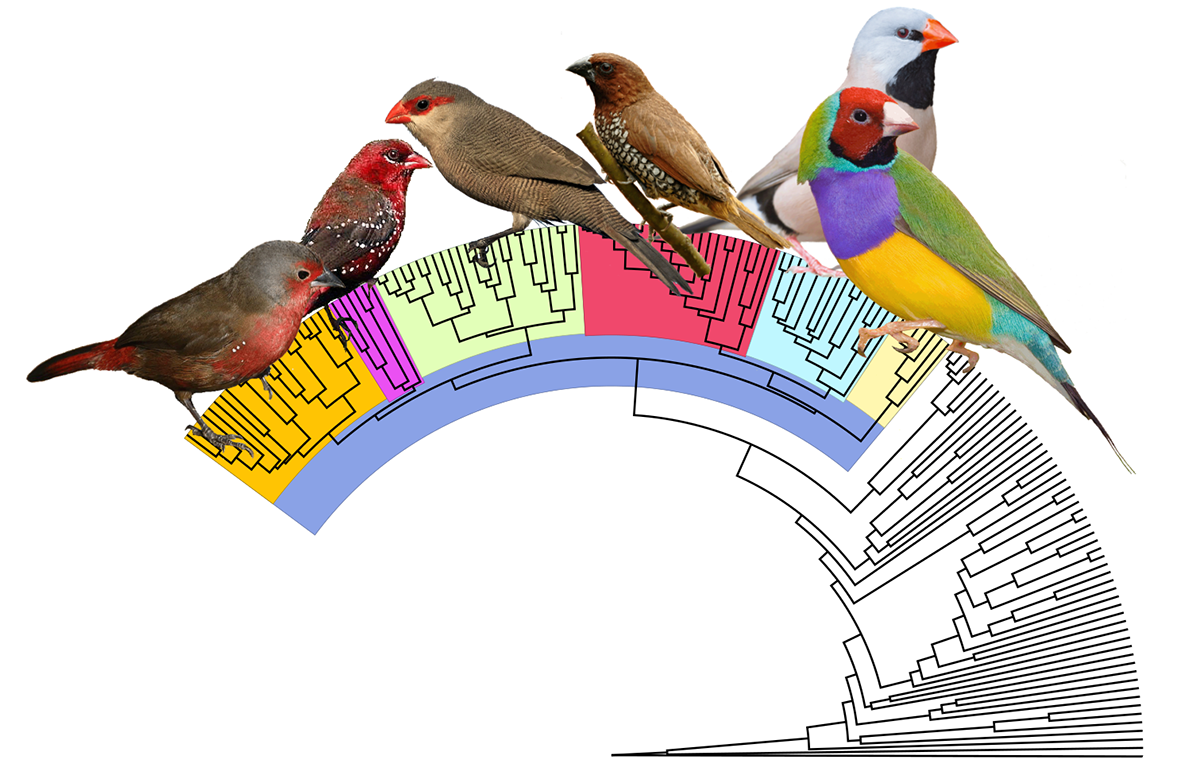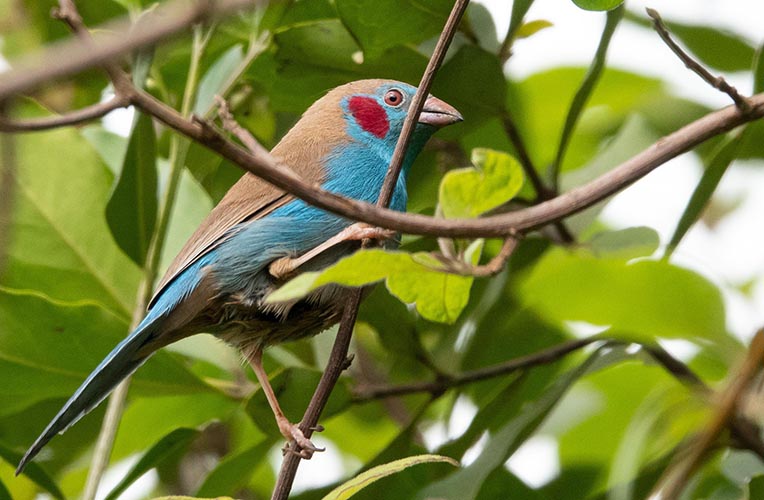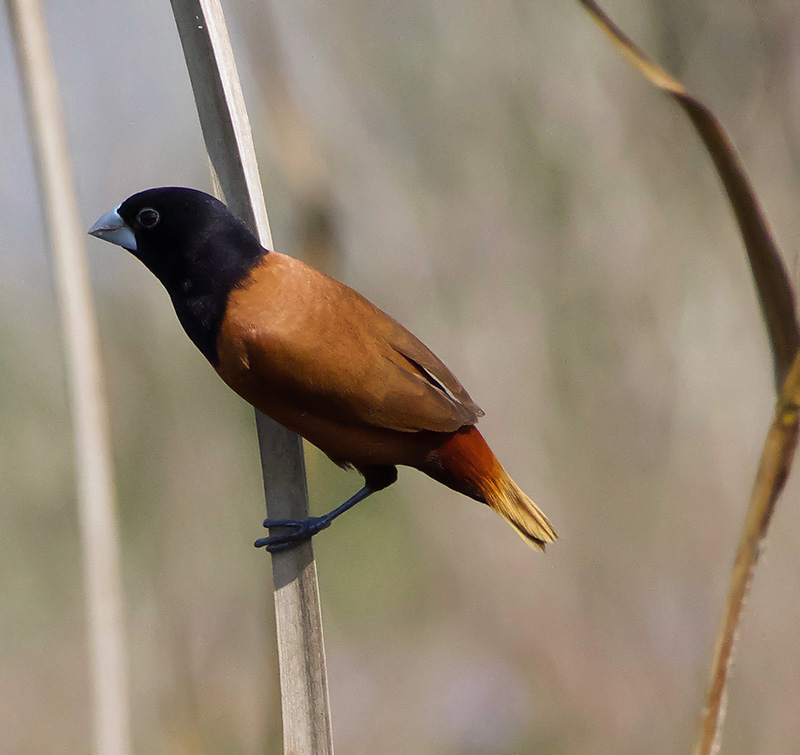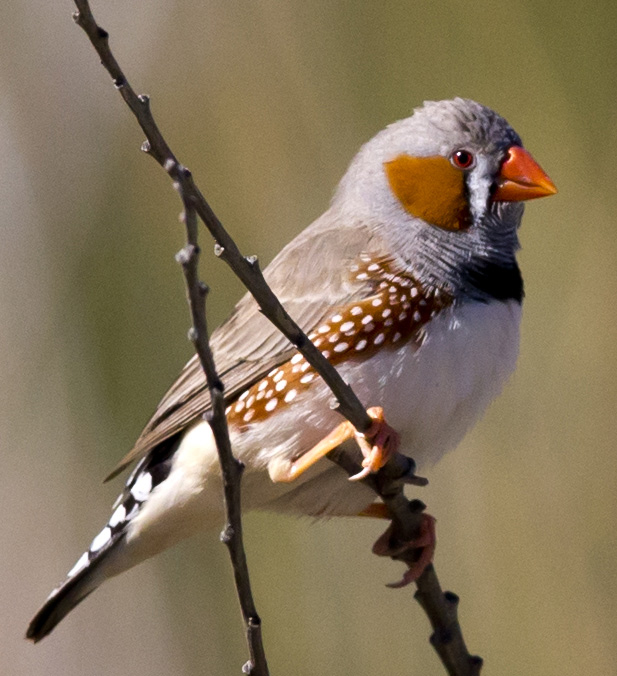- Home
- News and events
- Find news
- Family tree of waxbills reconstructed
Family tree of waxbills reconstructed

Researchers at the University of Gothenburg and Uppsala University have published the up to now most extensive study of the family tree of the avian family of waxbills and allies (Estrildidae).
The study, which was based on DNA, included more than 80% of the World’s approximately 145 species of waxbills.
 The new study concludes that the common ancestor of all waxbills lived approximately 11 million years ago.
The new study concludes that the common ancestor of all waxbills lived approximately 11 million years ago.
"The family tree in this study may among other things be used as a basis for many future lines of inquiry of these birds, which have evolved in different habitats in different continents, during a period in the history of Earth when large climatic variations have led to repeated fluctuations of forests and savannas, " says professor Urban Olsson.
 The waxbills are small seed-eating birds that occur naturally in Africa, southern Asia and Austalia.
The waxbills are small seed-eating birds that occur naturally in Africa, southern Asia and Austalia.
The group includes some of the most popular cage birds, e.g. Zebra Finch, Java Sparrow and a number of waxbills, firefinches, parrotfinches, cordon-bleus and munias.
 “The Zebra Finch from Australia and parts of Indonesia, is one of the World's most well studied species of birds, and have been described as a ‘super model’. It was only the second species of bird, after the domestic chicken, to have its entire genome mapped 2010, “says professor Urban Olsson.
“The Zebra Finch from Australia and parts of Indonesia, is one of the World's most well studied species of birds, and have been described as a ‘super model’. It was only the second species of bird, after the domestic chicken, to have its entire genome mapped 2010, “says professor Urban Olsson.
This new study supports previous suggestions that Australian and Indonesian Zebra Finches are better treated as two separate species.
The authors propose that the waxbill family is divided into six subfamilies: Amandavinae, Erythrurinae, Estrildinae, Lagonostictinae, Lonchurinae and Poephilinae, each including between two and ten genera. A number of species are proposed to get new generic names compared to those in current use.
The article: Olsson, U. & Alström, P. 2020. A comprehensive phylogeny and revised classification of the waxbills (Aves: Estrildidae). Molecular Phylogenetics and Evolution 146: 106757. (https://doi.org/10.1016/j.ympev.2020.106757) (Open Access).
Contact:
Prof. Urban Olsson, Department of Biology and Environmental Science, Gothenburg University. Email: Urban.olsson@bioenv.gu.se. Tel: +46 73 670 18 22
Prof. Per Alström, Department of Ecology and Genetics, Uppsala University. Email: per.alstrom@ebc.uu.se. Tel: +46 70 454 69 65
Photos:
The family tree with representatives of the six major branches, proposed to be treated as subfamilies. From left to right: African Firefinch, Lagonostictinae (Alan Manson); Red Avadavat, Amandavinae (Vijay Cavale); Common Waxbill, Estrildinae (Juan Emilio); Scaly-breasted Munia, Lonchurinae (Yathin S. Krishnappa); Long-tailed Finch, Poephilinae (J.J. Harrison); Gouldian Finch, Erythrurinae (Martin Pot). Pictures through Wikipedia Creative Commons (https://creativecommons.org/licenses/by-sa; licenses 2.0, 2.5, 3.0 and 4.0)
Red-cheeked Cordon-bleu Uraeginthus bengalus Kenya. © Per Alström
Black-headed Munia Lonchura atricapilla atricapilla Myanmar. © Urban Olsson
Zebra Finch Taeniopygia guttata Jim Bendon from Karratha, Australia / CC BY-SA (https://creativecommons.org/licenses/by-sa/2.0). https://commons.wikimedia.org/wiki/File:Taeniopygia_guttata_-Karratha,_Pilbara,_Western_Australia,_Australia_-male-8_(2).jpg
The photos may be used without permission, as long as the name of the photographer is acknowledged.